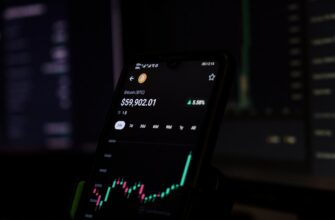- What Is Crypto GDP?
- Why Crypto GDP Matters for the Global Economy
- Calculating Crypto GDP: Methods and Metrics
- Major Challenges in Measuring Crypto GDP
- The Future of Crypto GDP Measurement
- Frequently Asked Questions
- How big is the crypto GDP compared to traditional economies?
- Does crypto GDP include Bitcoin mining energy costs?
- Can governments tax crypto GDP?
- Will crypto GDP replace traditional economic metrics?
What Is Crypto GDP?
Crypto GDP represents the total economic value generated within the cryptocurrency ecosystem over a specific period. Unlike traditional Gross Domestic Product (GDP), which measures national economic output, crypto GDP quantifies value creation across blockchain networks—including trading volumes, transaction fees, mining rewards, decentralized finance (DeFi) yields, NFT sales, and Web3 services. This emerging metric helps gauge the scale of the parallel digital economy growing alongside conventional financial systems.
Why Crypto GDP Matters for the Global Economy
As cryptocurrencies evolve from niche assets to economic infrastructure, measuring their collective impact becomes critical. Here’s why crypto GDP analysis matters:
- Economic Legitimization: Quantifiable metrics help legitimize crypto as a substantive economic sector rather than speculative hype.
- Policy Development: Governments use GDP-equivalent data to design balanced regulations for exchanges, wallets, and DeFi protocols.
- Investment Insights: Investors track growth trends to identify high-potential blockchain subsectors like staking or metaverse economies.
- Adoption Benchmarking: Highlights real-world utility beyond price speculation by measuring transactional throughput.
Calculating Crypto GDP: Methods and Metrics
While no standardized formula exists yet, analysts combine these approaches:
- Expenditure Method: Sums all spending within crypto ecosystems (e.g., NFT purchases, gas fees, exchange trading volumes).
- Income Method: Tracks earnings from crypto activities like mining rewards ($10.6B in 2023), staking yields, and validator commissions.
- Production Method: Values output of crypto-native services like decentralized lending/borrowing (DeFi TVL peaked at $178B in 2021).
Key data sources include on-chain analytics (Glassnode, Dune Analytics), exchange reports, and DeFiLlama.
Major Challenges in Measuring Crypto GDP
Accurate assessment faces significant hurdles:
- Volatility: Wild price swings distort value calculations month-to-month.
- Data Fragmentation: Activity spans thousands of chains, DEXs, and off-ramp services with inconsistent reporting.
- Valuation Complexities: How to value non-monetary contributions like DAO governance participation?
- Regulatory Gray Zones: Many transactions occur outside traditional financial oversight frameworks.
The Future of Crypto GDP Measurement
Innovations are addressing measurement challenges:
- Chainlink’s DECO protocol enables private data verification for institutional reporting
- OECD and IMF developing crypto-economic statistical standards
- Real-time dashboards like Token Terminal tracking protocol revenues
As CBDCs and tokenized assets merge with traditional finance, crypto GDP may eventually integrate into mainstream national accounting systems.
Frequently Asked Questions
How big is the crypto GDP compared to traditional economies?
Estimates suggest the crypto economy’s annualized value exceeds $1.2 trillion—larger than Switzerland’s GDP but just 1% of U.S. GDP. However, growth rates outpace traditional economies by 5-10x.
Does crypto GDP include Bitcoin mining energy costs?
Controversially, no. Like traditional GDP, it measures output value, not input costs. Environmental impacts are tracked separately through carbon accounting metrics.
Can governments tax crypto GDP?
Increasingly yes. Over 30 countries now tax crypto transactions, staking rewards, or capital gains. Tax authorities use blockchain analytics to estimate taxable activity within their jurisdictions.
Will crypto GDP replace traditional economic metrics?
Unlikely. It will likely become a complementary metric tracking the digital asset subset of broader economies, similar to how manufacturing or services GDP are segmented today.








